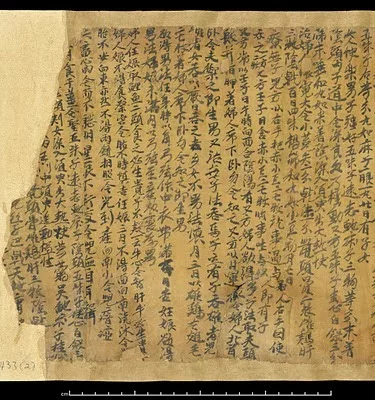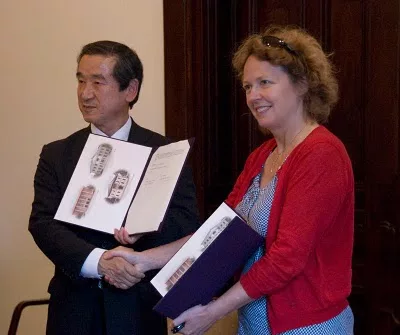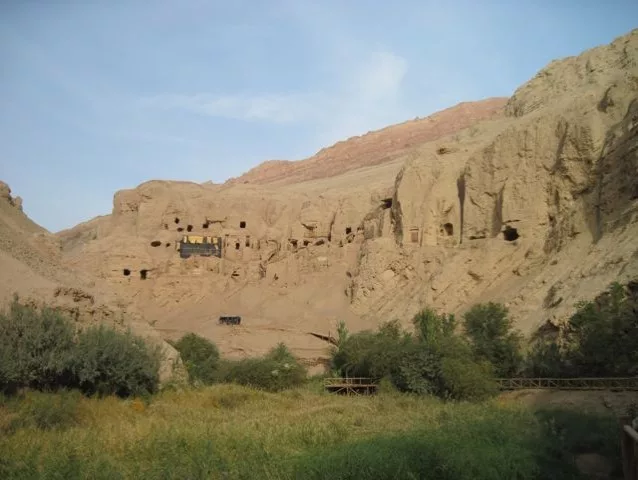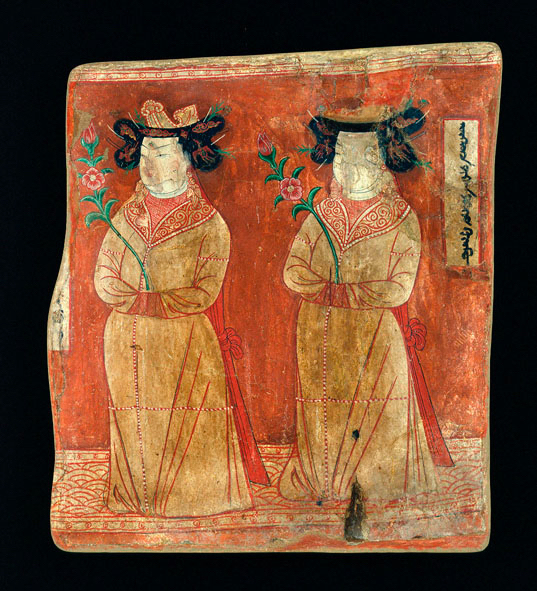Digital Humanities and the International Dunhuang Programme at Ryukoku University
This blog post is by Dr Adi Keinan-Schoonbaert, Digital Curator for Asian and African Collections, British Library. She’s on Mastodon as @[email protected].
I had the honour of being invited, together with Anastasia Pineschi (IDP Project Manager), by Prof Mazumi Mitani, Director of the Research Center for Digital Archives of Classical Books and Cultural Properties (DARC), to give talks at Ryukoku University in Kyoto, Japan. These were part of an international research seminar on 1 March 2024, and a Digital Humanities conference on 2 March 2024. These events aligned perfectly with the launch of the new IDP website as well as progress made in the area of Chinese Handwritten Text Recognition (HTR) – especially after the successful completion of Peter Smith’s PhD placement with us.

The first of these two events was the international research seminar entitled “The Frontline of Digital Humanities 2024.” This was organised by DARC and co-organised by the Research Center for World Buddhist Culture (RCWBC) “Interdisciplinary Research Group”, and sponsored by the Research Center for World Buddhist Cultures (RCWBC) “Western Region Comprehensive Research Group.”
After an opening speech by Prof Mitani we had two research presentations: the first one, entitled “Developing Digital Tools for an Online Audience: Customising and Modernising the IDP Website” was presented by Anastasia with brilliant interpretation to Japanese by Pradhan Gouranga. The second presentation was by Dr Oyunjargal Ochir (Mongolian National University), presenting on “Research on the history of Mongolia during the Qing Dynasty – its horizon and prospects.” This was followed by comments made by Prof Setsu Matsukawa (Faculty of Sociology, Otani University), followed by a Q&A session and closing remarks.


In the afternoon Anastasia and I had a tour of the main hall of Ryukoku University’s Omiya Campus. Prof Mitani recounted some of the rich history of this university campus and its buildings which are of great cultural importance. Ryukoku University was founded as a school for Buddhist priests of the Nishi Hongan-ji denomination in 1639, only much later to become a secular university (1876). We toured the main hall, which was built in 1879, and especially enjoyed the shrine upstairs which was striking in its beauty.

We passed by the Karamon Gate on the way to the Omiya Library with its outstanding collections on Buddhism and interesting items on display. At the library, we had a ‘show-and-tell’ – collections items laid on tables for us to observe – both originals and replicas. These featured many of the Dunhuang collection languages, such as Kharosthi (written on wood), Khotanese, Sanskrit (Nepali wood bark leaves), Tangut, Tocharian, and Chinese. Walking around these wonderful manuscripts has sparked many fascinating conversations on their history and digital methods that could be used to study them in new ways.



The second day (2 March) saw a DH conference on the theme of “The Future Image of the Digital Archives of Classical Books and Cultural Properties.” After opening remarks by Prof Takashi Irizawa (President, Ryukoku University), Anastasia and I gave talks in a special lecture session entitled “IDP’s Contribution to Digital Humanities and Future Prospects.” Anastasia gave a shorter version of her talk from the previous day, after which I talked about “Digital Research and Handwritten Text Recognition at the British Library & Opportunities for IDP.” In this talk I gave an overview of the activities of my team (Digital Research), the Library’s work around OCR/HTR, and especially Peter’s placement, working with Colin Brisson on advancing Chinese HTR (see Peter’s recent blog post).

Afterwards we had a presentation by Prof Ayudai Ochir (Japan-Mongol Cooperative Bichees Research Project) on “Archaeology and Digital Archives: Expectations and Prospects.” This was followed by a talk by Prof Yasuo Abe (Professor Emeritus, Nagoya University, Professor, Faculty of Letters, Ryukoku University) on “the Significance of Archives of Religious Texts and Cultural Heritage: Focusing on the Cases of Honjoji Temple, Shitennoji Temple, and Ren-in Temple.”
On the third day (3 March), Prof Mitani has kindly arranged a visit of the Nishi Hongwanji Temple, which is located not too far from the Omiya Campus of Ryukoku University. We walked around this marvellous 17th century temple and enjoyed explanations by Prof Mitani on the paintings, architecture, gardens and other temple features. A few of us had the pleasure of meeting Prof Mitani’s wife where we were welcomed at their home. We were immensely privileged to enjoy her traditional tea ceremony expertise!
This trip was jam-packed with engaging meetings, thought-provoking academic exchanges, and memorable cultural experiences, all at the backdrop of the beautiful city of Kyoto. Next week we will be reuniting with Prof Mitani and other representatives from Ryukoku University at the workshop in Dunhuang, China, where we will be discussing our ongoing IDP partnerships. I very much look forward our continued conversations and collaborations.
This article was originally posted on Digital Scholarship Blog on 10 April 2024.







If you have feedback or ideas about this post, contact us, sign in or register an account to leave a comment below